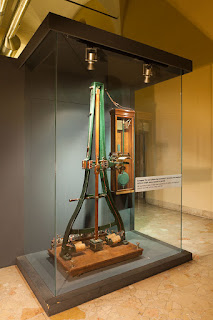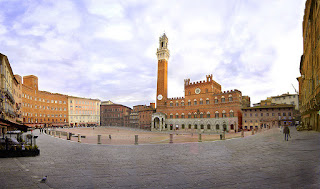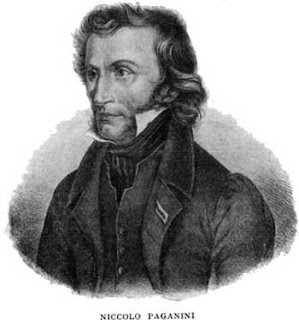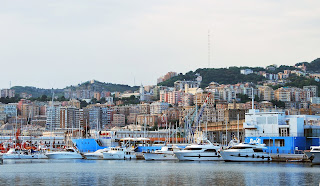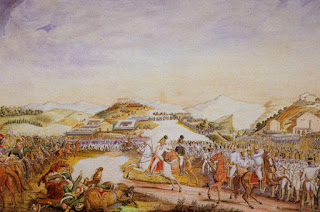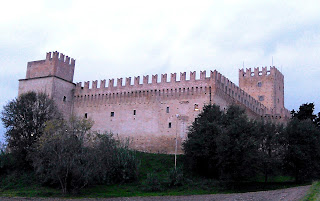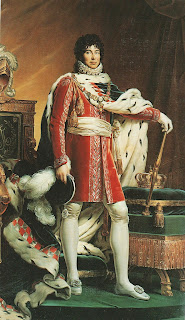Opening statement of the Risorgimento came from a Frenchman
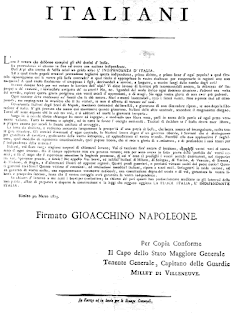 |
| Murat's Rimini Proclamation is seen as the rallying call for the Risorgimento |
But the stirring words: ‘Italians! The hour has come to engage in your highest destiny…’ came from a Frenchman, Gioacchino (Joachim) Murat, who was at the time occupying the throne of Naples, which he had been given by his brother-in-law, Napoleon.
Murat had just declared war on Austria and used the Proclamation to call on Italians to revolt against the Austrians occupying Italy. He was trying to show himself as a backer of Italian independence in an attempt to find allies in his desperate battle to hang on to his own throne.
Although Murat was acting out of self-interest at the time, the Proclamation is often seen as the opening statement of the Risorgimento, the movement that helped to arouse the national consciousness of the Italian people. It led to a series of political events that freed the Italian states from foreign domination and unified them politically.
Murat’s Proclamation impressed the Milanese writer Alessandro Manzoni, who wrote a poem about it later that year, Il proclama di Rimini. However, he abandoned it unfinished after Murat’s military campaign failed.
 |
| Joachim Murat was one of Napoleon's most trusted military aides |
Murat was one of Napoleon’s most trusted military aides, who had shown himself to be a daring and capable military leader.
While in charge of Naples, Murat made social and economic changes, reformed the University and introduced new scientific facilities. He built new roads and started work on Piazza del Plebiscito and the Church of San Francesco di Paola.
After Napoleon’s exile to Elba in 1814, Murat signed a treaty with Austria, pledging his help against the French troops in the north.
He took over the Papal States and Tuscany in return for an Austrian assurance that he would remain on the throne of Naples. From Rimini he writes in his Proclamation: 'Providence has called you to be an independent nation. From the Alps to the straits of Sicily, there is but one cry – Italian independence.’
But then Napoleon escaped from Elba and set out for Paris. Murat decided to realign himself with his brother-in-law and declared war on the Austrians.
He fought battles to save his own throne and to prevent the Austrians from moving into France to take on Napoleon. But after he lost a major battle at Tolentino in May and his army was in tatters, he fled from Italy to France, where he was snubbed by Napoleon.
 |
| Murat was killed by a firing squad in the Calabrian town of Pizzo |
With a small group of soldiers he landed at Pizzo on the coast of Calabria, planning to march north to Naples. Instead, he was captured, imprisoned and sentenced to death.
On 13 October 1815 he faced his firing squad, smartly dressed and fearless, having refused the offer of a blindfold.
Within another 46 years Italy had become a unified country.
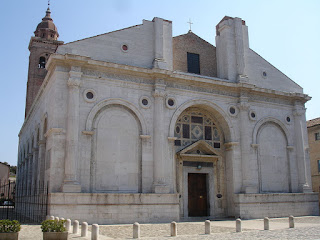 |
| The Tempio Malatestiano, a 13th century Gothic church in Rimini, has works by Piero della Francesca and Giotto |
The coastal city of Rimini was part of Napoleon’s Cisalpine Republic when Murat launched his Proclamation from there to the Italian people in 1815. The city looking out over the Adriatic Sea was incorporated into the Kingdom of Italy in 1860. Now part of the Emilia-Romagna region it has become one of the leading seaside resorts in Europe, with wide sandy beaches and plenty of hotels and restaurants. One of Rimini’s most famous sights is the Tempio Malatestiano, a 13th century Gothic church originally built for the Franciscans that was transformed on the outside in the 15th century and decorated inside with frescos by Piero della Francesca and works by Giotto.
 |
| The Palazzo Reale, on the Piazza del Plesbiscito, was Murat's luxurious home in Naples |
Murat lived a luxurious lifestyle during his brief rule over the Kingdom of Naples and resided at the Royal Palace in Naples (Palazzo Reale), which is at the eastern end of Piazza del Plebiscito. The 17th century palace now houses a 30-room museum and the largest library in southern Italy, which are both open to the public. A statue of Murat was erected in the 1880s in the west façade of the Royal palace.
Also on this day:
1282: French driven out by the Sicilian Vespers
1892: The birth of painter and designer Fortunato Depero
1905: The birth of architect and engineer Ignazio Gardella
Home

